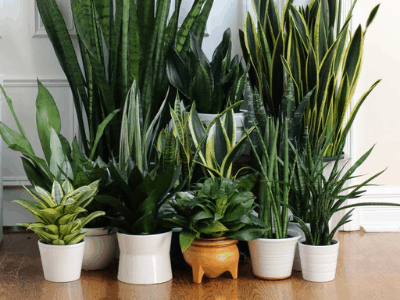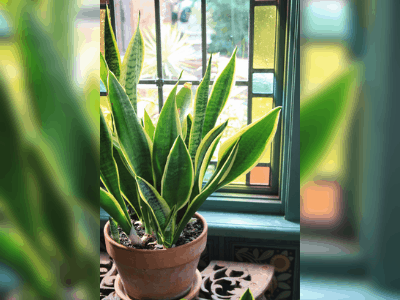
Sansevieria It Self
Why Underwatered Can Be Occured?
Sansevieria or (san-se-vi-ah) in the Lily family, also known as one of the world’s most popular plants.
On the basis of molecular phylogenetic studies Sansevieria has been included in the genus Dracaena…
…which is native to tropical Africa in particular Madagascar, and southern Asia.
The 70 or so species formerly placed in the genus have been known by many common names….
…..including mother-in-law’s tongue, devil’s tongue, jinn’s tongue, bow string hemp snake plant, and snake tongue.
According to the APG III classification system, Dracaena is a member of the family Asparagaceae…
…subfamily Nolinoideae (formerly the family Ruscaceae).
It has also been placed in the family Dracaenaceae. With its durability, the Sansevieria makes an excellent choice…
…for apartment dwellers who typically have difficulty with houseplants due to limited lighting.
They should take a good look at snake plants. As the most tolerant of all decorative plants…
…Sansevieria can survive the harshest growing conditions, abuse and neglect.
Simply put, sansevieria is a tough houseplant to kill. Snake plants are versatile, classic houseplants with sword-like foliage.
The great thing about this plant is that it’s a great plant for forgetful gardeners…
…and it’s an excellent air purifier plant for indoor environments.
Despite being a resilient succulent that can grow from 6 inches to several feet, snake plants have a number of health benefits.
Household plants are often strategically placed for decoration and to maintain good feng shui.
But did you know that some of these same plants also have some health benefits?
You might be surprised to learn that snake plants bring both health benefits and beauty to your home.
Keep reading to discover the snake plant’s benefits, how to care for one, and how to keep it alive.
But before that here we have the story from Dan about his experience having underwatered snake plant issue!
Let us hear Dan’s story
“Oh, it’s just that my snake plant is in a pot and the leaves are falling off. What should I do?”
I was leaning on my desk and checking the overalll condition of my snake plant.
I am not expecting this falling leaves on snake plant happens to me.
The leaves were all drying up and they would be dropping soon enough if we didn’t take care of them.
Before this happened, I had learned about how easy it was to grow plants indoors with minimal effort or space needed.
But this thime become nightmare! I grab my laptop and start searching how to turns this back to normal.
After a long journey searching and applying what I learn to my snake plant, 3 months of struggling…
.…finally I can bring back my snake plat to healthy state.

Plants usually shows their extreme dehydration through the changes in their appearance. This includes the discoloration and distortion of the leaves and shallow growth.
Arifur Rahman, Agriculturist
Here’s the mainn thing…
The Challenge Having This Plant
If you’re looking for a new challenge for your green fingers, there are several hardy and easy to care for plants that could be chosen.
The snake plant, or Sansevieria, may fit your criteria and be one that you haven’t come across before.
A snake plant is very common on many gardeners’ “scary plant list” and we’ll answer one…
….of the most common questions about the plant, which is how fast does it grow?

Go on…
Where Do These Plants Come From?
The Snake Plant is native to arid regions of Africa, Madagascar, and southern Asia, and can often be found…
…in the shade of a larger tree or shrub. Many Snake Plant species resemble agaves or yuccas…
….which are also plants native to the same regions. Snake Plants use the Crassulacean Acid Metabolism (CAM)…
….photosynthesis process to survive heat and drought.
CAM-using plants absorb carbon dioxide during the day and release oxygen at night.
They close their stomata during the day to conserve water and open them at night to store CO2 in the form of an organic acid.
The plants use the acid for their photosynthetic needs the next day.
Snake Plants are extremely hardy and long-lived because of this. In the right circumstances, some people can live for decades.
Next up…
Forms of Plants for Snakes
Slender, green leaves with grey or silver longitudinal lines are the most common snake plant leaves.
This plant can grow to be several feet tall and thrives in low-light environments.
These plants come in a wide variety of varieties. Among the most common are the following::
- Bird’s nest herb serpent: This plant is also known as Hawaii and is comparatively thin, rising to 6 inches tall. It forms clusters of leaves that closely resemble a cup, similar to how a nest is made by birds.
- Cylinder plant with the snake: Sansevieria cylindrical has round leaves that can grow to be several feet long. g. Lon leaves The leaves of this plant are shaped like a crown.
- Sansevieria Laurentii: Laurentii is a common snakeweed that is distinguished by its green center and yellow margins.

Keep reading…
What is Underwatered?
The leaf is underwatered if it tastes light and dry. When you water the vine, you will notice that the leaves are crisp rather than limp.
Wilting is caused by a lack of water flowing into a plant’s cells in this situation.
When the soil is damp, the screwdriver can quickly penetrate it.
If the plant’s water supply is temporarily cut off, its growth can only be slowed for a short time.
Lower leaves are usually the first to be affected, becoming yellowed and twisted.
Consider the symptoms of under-watering as a starting point for more specialized water treatment.

Last but not least…
Signs of Underwatered Snake Plant
Plants usually show their severe dehydration by changing their shape. This is characterized by discoloration, distortion, and shallow development of the leaves.
Leaves Wrinkling
The symptoms of extreme thirst usually appear first on the plant’s branches. Wrinkling is one of the Snake Plant’s movements. Wrinkles on plants are the same as wrinkles on humans. These are the lines that appear on the surface of the leaves. They come in a variety of sizes and depths, from small to long.
Leaves Roll Over
If the snake plant sits in a desert-like setting for a long time, it will fall over. Their colorful leaves are going to begin to droop and appear dead. This happens because of the subwatering phase. A shortage of water disrupts the method of supplying the specifications for the whole plant. This makes the leaves bend over, thus.
Tips from Brown
If the snake plant is left in a desert-like environment for an extended period of time, it will eventually fall over. Their vibrant leaves will begin to droop and appear to be dead. This occurs as a result of the subwatering phase. A lack of water causes the method of supplying the plant’s specifications to be disrupted. As a result, the leaves bend over.
Edges of the Brown and Dried Leaves
The browning tips are caused by the decoloration side of the leaves being close to the culprit. Water that is insufficient will not be able to supply essential substances to any item. The color of the edges would then change from yellow to brown over time. They also appear to be dry and crispy.
Curling Leaves
It’s unpleasant to watch the Snake Plant’s blades fold and curl in curves and loops. If this happens, make sure your Snake Plant is collecting the proper amount of water. Curling can mean a variety of things, but it’s also a sign that you might be underwater. A structural stiffness procedure is one such malformation.
Brown Turning Leaves
Brown and crunchy leaves make for strange sights. If your snake plant is exhibiting the same symptoms, you may have left it in a drought for an extended period of time. This indicates that they are not obtaining moisture and essential compounds at the same time. Their foliage, on the other hand, is almost entirely brown as a result of this. Not only the leaves, but also the roots, can be harmed by underwatering. If the roots are seriously and significantly damaged, it will cease to function normally.
It is indeed Dry Potting Soil
While the Snake Plant is drought-tolerant, you will need to water it from time to time. Too dry potting soil could be a sign of subwatering. It is a definite no because it prevents the supply of nutrients from reaching the farm. This is due to the fact that the vine, which is made up entirely of water, lacks the ability to provide nutrients.
Sluggish growth
If you notice that your Snake Plant is growing too slowly, you should be aware that there is a problem
Sum Up
See having Snake plant is good choice for you to have! It’s cool, its famous, it’s easy to have and care!
What else do you need? In this pandemic time like this, is a good choice for you to have an new activity…
…and having snake plant is a good choice for you to have!
Conclusion
Last thing for sure. This plant need to be care carefully, remember plant need the “love” too.
Alright that’s all for today! Do you have any questions about all of this?
Or do you want to add more method for taking care of underwatered snake plant?
Let me know your recommendation from the comment below.
I hope you can now take care your snake carefully and grow it big!
Thanks for reading this article! Bye!

